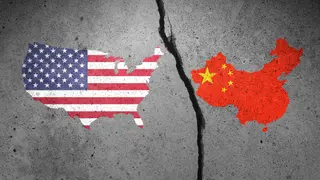 \
\
作者/Author(s): Hal Brands
網站來源/Source: American Enterprise Institute
日期/Date: 06/12/2025
關鍵字/Keywords: 科技、經濟、晶片
摘要:
美中貿易戰已達成暫時停火,部分出口管制措施亦出現緩解。然而,雙方之間仍有許多待協商議題。
- 出口管制一直是美中經濟對抗與人工智慧發展競爭的核心戰略工具。
- 自川普政府第一任期以來,美國即對關鍵技術硬體與軟體實施出口限制,而中國則極力試圖規避這些措施。
- 談判的初步結果包括解除部分出口限制。然而,美國仍應保留某些關鍵限制措施,以維持其科技領先地位;若進一步鬆綁,恐將適得其反、自毀前程。
- 由於限制措施弊大於利,且無法實質阻止中國人工智慧技術的發展。,因此陷入困境的企業希望能得到緩解。
- 華為在 2023 年推出新款智慧型手機,DeepSeek 在 2024 年推出 AI 推理模型,顯示美國出口管制的侷限性。
- 就連輝達也曾批評這些管制措施,認為美國此舉只會迫使中國加速追求科技自給自足。
- 然而,北京已經意識到出口管制對其科技發展構成的實質威脅,因此尋求相關解法。DeepSeek 也承認出口管制是其主要技術瓶頸。這也是中國僅對稀土出口進行有限報復的原因。
- 美國的出口管制也存在不少侷限:
- 中國自2015年起即推動《中國製造2025》計畫,致力於建立科技自立與主導地位。
- 美國企業亦積極調整產品設計,以規避出口限制,同時維持對中供應。
- 美國執行政策的官僚體系和協調盟友的做法,給了中國足夠時間來因應與消化新一波制裁措施的影響。
- 與其單純依賴出口管制,美國應積極提升自己的技術生態系統。但川普最近對外國人才和學術界的攻擊可能會傷害美國的創新能力。
Summary:
The U.S. and China had a truce in their trade war, with some ease in the export controls. However, there is much more to debate.
- Export controls had been central to the U.S.-China economic warfare and their competition in AI development.
- Since the first Trump administration, the U.S. has imposed export controls on critical technology hardware and software, while China has tried hard to circumvent the measures.
- Initial results from the negotiation included partial lifting of some export restrictions. However, the U.S. should preserve some measures to protect its technological lead. Any further alleviation will be self-destructive.
- Firms caught in the crossfire hoped for relief, as the restrictions did more harm than good and could not stop China's AI development.
- Huawei launched a new smartphone in 2023, and DeepSeek introduced an AI reasoning model in 2024, signaling the limitations of the U.S. export controls.
- Even Nvidia criticized U.S. restrictions that would compel China to seek self-sufficiency.
- However, Beijing realized the damage export controls could do to its technological development and sought relief. Even DeepSeek admitted that export controls are the primary obstruction. This is why China restrained its retaliation measures to rare earth mineral exports.
- The U.S. export controls had their limitations, too.
- China has pursued technological self-sufficiency and dominance since 2015 by introducing the Made in China 2025 initiative.
- U.S. firms are also proactive in tailoring their products to circumvent export controls while maintaining supplies for China.
- U.S. bureaucratic and allied approach gave China the time to mitigate the impacts of new measures.
- Instead of solely relying on export controls, the U.S. should empower its own technological ecosystem. Trump's recent attacks on foreign talents and academia may hurt the U.S. innovation capabilities.
